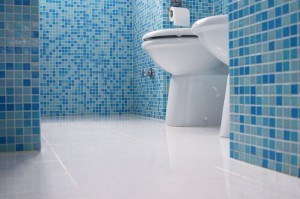 Tiles are great in the home, but you do need to be mindful of how they are installed. This will determine whether your tiling is a blessing or a potentially expensive curse. There’s one thing that all tile stores agree on – most tile problems are related to grout. Standing water penetrates grout because it is not waterproof – even if it’s been sealed – and, as a result, water can pass through it.
Tiles are great in the home, but you do need to be mindful of how they are installed. This will determine whether your tiling is a blessing or a potentially expensive curse. There’s one thing that all tile stores agree on – most tile problems are related to grout. Standing water penetrates grout because it is not waterproof – even if it’s been sealed – and, as a result, water can pass through it.
If water permeates grout and meets with waterproof subflooring or cement, no trouble or damage will occur. But if it meets with drywall or porous subflooring, the consequence could eventually be replacement of the wall and the tiles. Also, another inevitable result will be water seeping to other parts of the home.
Grout cracks when tiles move because grout it is not flexible. Cracking is often a telltale sign that the tiles were not properly adhered to the old floor or underlayment. If grout cracks or crumbles and you hear crackling or a hollow sound underneath, this too could indicate serious trouble and the only solution may be tile replacement.
What many homeowners don’t know is that when incorrect adhesive is used or when the underlayment is not waterproof, the tiles and glue separate. Tiles can only stay in position with pressure between tile, grout and wall. If this pressure is released, an entire tile installation can literally pop up off the floor.






